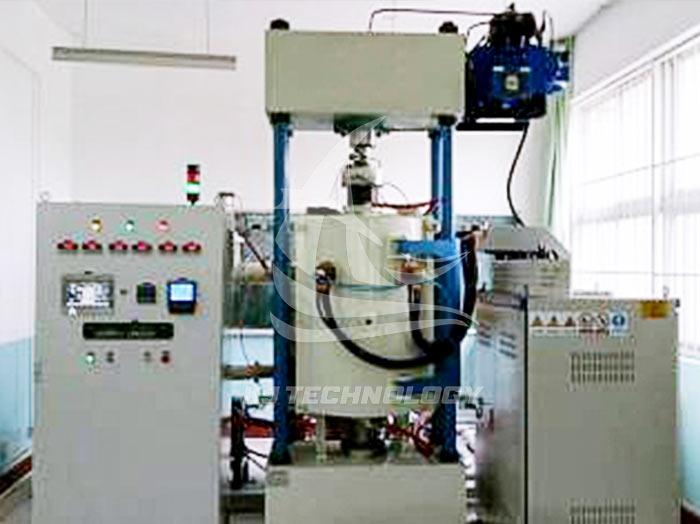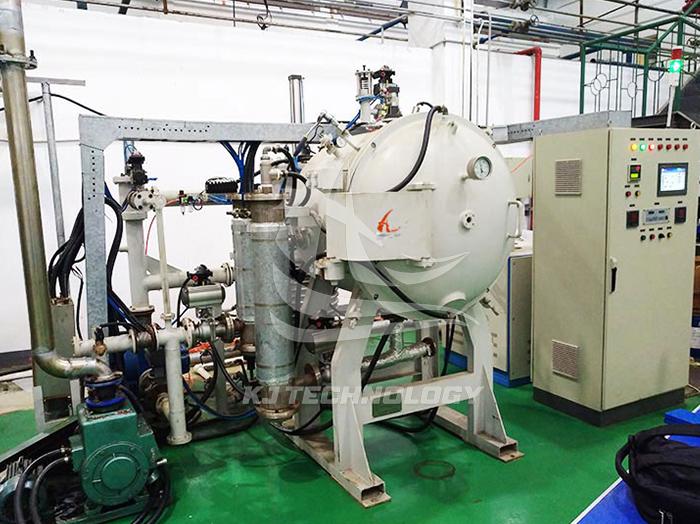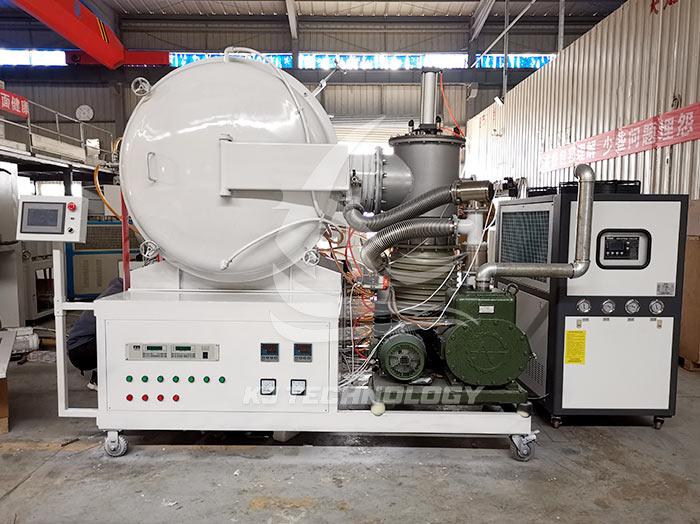Can a vacuum quenching furnace be filled with nitrogen gas?
 11-10-2025 Author: KJ technology
11-10-2025 Author: KJ technology
The vacuum quenching furnace can be filled with nitrogen gas, but it needs to be comprehensively judged based on material characteristics, process requirements, and equipment conditions. The following is a detailed analysis:
1. Applicability of nitrogen in vacuum gas quenching furnace
Chemical stability:
Inert performance: Nitrogen is chemically stable at room temperature, but may react with certain metals (such as titanium, aluminum, magnesium, etc.) at high temperatures (usually>500 ℃) to form nitrides (such as TiN, AlN).
Applicable materials:
Safe materials: ordinary carbon steel, alloy steel (such as 45 # steel, 40Cr), some stainless steel (such as 304, 316L), tool steel (such as H13, W6Mo5Cr4V2).
Risk materials: titanium alloys (such as TC4), high-temperature alloys (such as Inconel 718), active metals (such as aluminum, magnesium).
Cooling capacity:
Thermophysical properties: The thermal conductivity (0.026 W/m · K) and specific heat capacity (1.04 kJ/kg · K) of nitrogen are moderate, and the cooling rate is between argon and helium.
Pressure effect: By increasing the nitrogen pressure (such as to 4-6 bar), the cooling efficiency can be significantly enhanced, approaching the effect of argon at low pressure.
Economy:
Cost advantage: Nitrogen production has low cost (air separation), which is 1/5 to 1/10 of argon gas, suitable for mass production.
Equipment compatibility: Most vacuum quenching furnaces are designed with nitrogen in mind and do not require additional modifications.
2. Process conditions for nitrogen gas flow
Temperature control:
Safe temperature: For materials sensitive to nitriding, the quenching temperature should be strictly controlled below the nitriding reaction threshold (such as titanium alloy quenching temperature usually ≤ 850 ℃).
Gradient cooling: Some processes use segmented cooling, with high-pressure nitrogen gas used for rapid cooling in the initial stage, and pressure reduced in the later stage to reduce the risk of nitriding.
Gas purity:
Industrial grade nitrogen (purity ≥ 99.99%): suitable for ordinary carbon steel and alloy steel.
High purity nitrogen (purity ≥ 99.999%): used for stainless steel or precision parts with high surface quality requirements.
Equipment requirements:
Pressure range: The furnace body needs to be able to withstand nitrogen pressure (usually 1-6 bar), and some high-pressure furnaces can reach up to 10 bar.
Sealing: Ensure that the nitrogen leakage rate is ≤ 0.5%/h and maintain the stability of the vacuum environment.
3. Risks and countermeasures of nitrogen gas supply
Nitriding risk:
Phenomenon: A white or gray nitride layer forms on the surface of the workpiece, with increased hardness but decreased toughness.
answer:
Use argon or a mixture of gases (such as 70% nitrogen and 30% argon) instead.
Reduce the quenching temperature or shorten the holding time.
After quenching, surface treatment (such as sandblasting, acid washing) is carried out to remove the nitride layer.
Uneven cooling:
Phenomenon: The deformation of the workpiece exceeds the standard or the hardness distribution is uneven.
answer:
Optimize nozzle layout to ensure even gas coverage of the workpiece.
Using a rotating or swinging workpiece device to improve cooling uniformity.
Economic balance:
Case: A certain automobile gear factory uses nitrogen quenching to reduce costs, but the scrap rate increases due to nitriding. By optimizing the temperature curve, the scrap rate is reduced and the overall cost is lowered.
4. Typical application scenarios
Carbon steel/alloy steel quenching:
Process: Vacuum heating to 850-900 ℃, nitrogen pressure of 4 bar, cooling rate of 80-100 ℃/s.
Effect: Hardness reaches 58-62 HRC, deformation ≤ 0.1%, surface smoothness Ra0.8 μ m.
Solid solution treatment of stainless steel:
Process: Vacuum heating to 1050-1100 ℃, nitrogen pressure of 2 bar, cooling rate of 50-70 ℃/s.
Effect: Uniform grain size, corrosion resistance meets the standard, and there is no oxidation or decarburization.
Pre cooling and quenching of tool steel:
Process: Vacuum heating to 1250 ℃, rapid cooling to 600 ℃ under nitrogen pressure of 6 bar, followed by air cooling.
Effect: Reduce martensitic transformation stress and lower the risk of cracking.
5. Conclusion and Suggestions
Priority for nitrogen supply:
Handle non reactive metals such as carbon steel, alloy steel, stainless steel, etc.
Pursuing low-cost and large-scale production.
The allowable pressure range of the equipment is ≥ 4 bar.
Caution or avoidance of nitrogen gas supply:
Processing nitride sensitive materials such as titanium alloys and high-temperature alloys.
Precision parts that require extremely high surface toughness.
Insufficient sealing or low pressure bearing capacity of the equipment.
Optimization direction:
Develop an intelligent gas control system to adjust nitrogen pressure and flow rate in real-time based on materials.
Promote nitrogen argon mixed gas technology, balancing cooling efficiency and chemical stability.








